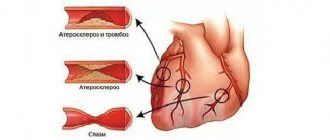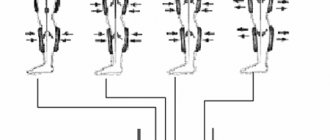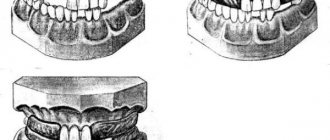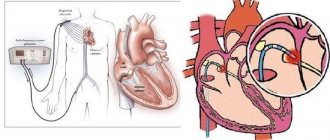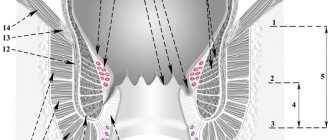Electrophoresis is a physiotherapeutic procedure during which an electric current is applied to the human body. Electrophoresis is used to administer drugs through the skin or mucous membrane. Preparations for electrophoresis are varied and are selected depending on the disease to be treated. Quite often, electrophoresis is performed with aminophylline, a drug that improves blood circulation, eliminates pain, and dilates the bronchi. The procedure should be prescribed exclusively by the attending physician. You should not resort to self-medication, as this can negatively affect your health.
At the Yusupov Hospital, you can get advice on the need to perform electrophoresis with aminophylline from the best specialists in Moscow, as well as undergo a course of treatment for the disease. At the rehabilitation center, experienced rehabilitation therapists and physiotherapists perform complex treatment of various pathologies using effective techniques, including electrophoresis.
Electrophoresis with aminophylline: indications
Eufillin is an antispasmodic agent that has bronchodilator and analgesic properties. Eufillin is used to treat respiratory diseases (bronchitis, pneumonia), musculoskeletal disorders (osteochondrosis, intervertebral hernia), muscle and vascular spasms. Using electrophoresis, the active substance penetrates the body through the skin. The drug remains in and under the skin, and also enters the circulatory and lymphatic systems. This ensures a long-lasting effect of the drug. Electrophoresis with aminophylline helps improve blood circulation and improves metabolic processes in tissues.
Charged ions that enter the body due to electrophoresis irritate tissue receptors, increasing their sensitivity to the drug. Electrical stimulation activates protective reactions in the body and accelerates tissue regeneration.
Eufillin has an analgesic effect and relieves muscle spasms, which is important in the treatment of osteochondrosis. Electrophoresis with aminophylline on the cervical spine helps relieve pain, relax muscles, improve blood flow and lymph flow in the affected tissues. This helps to improve the patient's condition.
The principle of choosing methods of physiotherapy for delayed speech development
Delayed speech development is not always associated only with problems of the speech apparatus, often these are manifestations of disorders with vision, hearing, nervous system , these can be the consequences of negative influences during intrauterine development, as well as if a natal injury has been diagnosed. Physiotherapy is prescribed for delayed speech development if in early childhood the child suffered injuries or certain viral diseases , infections, and such factors provoked a complication.
Aminophylline solution for electrophoresis
To perform the procedure, you will need a two percent aminophylline solution. You can buy it at the pharmacy or your physical therapy office will already have it. The procedure should be performed in a medical facility under the supervision of specialists. Although electrophoresis is a relatively safe procedure and has very few contraindications, it must be performed by a professional to ensure patient safety.
Gauze or filter paper is generously moistened with aminophylline solution. The electrodes are wrapped in it and placed on the patient’s skin in the area of the affected organ, secured with additional weight (for example, a bag of sand). During the procedure, the patient is in a lying position in a relaxed position.
Electrophoresis with aminophylline is performed for 20 minutes. The course of treatment consists of 10-15 sessions, which should preferably be done every day.
Contraindications to the use of electrophoresis with aminophylline include:
- drug intolerance;
- skin diseases;
- heart pathologies;
- presence of a pacemaker;
- intolerance to procedures involving electric current;
- fever;
- oncological diseases.
What are the stages of this disease, and how do they differ?
Like any disease, osteochondrosis goes through several stages in its course, at each of which its own treatment methods are recommended. There are four such stages in total:
- The first is practically asymptomatic, but destructive processes already begin inside the spinal discs, and the spine itself becomes more susceptible to injury.
- The second is characterized by more pronounced disorders, which are revealed during examination. During this period, the intervertebral spaces narrow.
- The third is characterized by the appearance of obvious deformation, determined visually, and even a hernia. Pain syndrome may also occur. At this stage, the patient often seeks medical help himself with complaints of pain with sudden movements. Symptoms depend on the location of the diseased area.
- The fourth stage is the most difficult. As a result of pinched nerve endings, the patient experiences severe pain, which can lead to complete immobilization.
To avoid the occurrence of intervertebral hernia, treatment of osteochondrosis should begin as early as possible, at the first signs of disruption of the proper functioning of the spine, without waiting for the manifestation of severe pain.
Electrophoresis with aminophylline on the cervical spine
Electrophoresis with aminophylline on the cervical spine is used to treat neurological and surgical pathologies in this area. Direct exposure to the affected area of the drug, bypassing the gastrointestinal tract, allows you to obtain the best therapeutic effect. The drug accumulates in the skin and subcutaneous layer and remains there for approximately 24 hours, which contributes to the prolonged action of the drug.
Electrophoresis with aminophylline is quite safe, painless and has a minimum of adverse reactions, so it can be used in most patients with diseases in the neck area, including children. The procedure is actively used in pediatric practice and traumatology. Electrophoresis with aminophylline on the cervical spine is indicated in the following situations:
- torticollis (curvature of the cervical spine in a baby during childbirth, after injury, etc.);
- cerebral paralysis;
- circulatory disorders in the cervical spine;
- muscle hypertonicity;
- osteochondrosis;
- osteoarthritis;
- hernias
The concept of electrophoresis, indications, restrictions on the purpose of physiotherapy
Electrophoresis is used for medicinal purposes in various pathologies during the recovery period of an acute illness, as well as during remission in a chronic illness. Electrophoresis in children and adults is often necessary to administer the drug. A very large number of medications are not used in children due to their young age.
Administration of the drug using electrophoresis allows the use of prohibited drugs, since the dosage of the active substance entering the blood is too small. They do not have negative effects on the baby’s body; they bring only positive results.
Electrophoresis involves the use of direct current. It is generated by special devices and supplied to the patient’s tissues using electrodes. The devices have 2 types of electrodes: cathode, anode. By interacting with each other, they move charged particles in the body. The cathode is the negative electrode. It attracts positively charged ions. The anode is the positive electrode. Negatively charged particles tend to it.
Together with the ions, the medicinal substance enters the tissue. The choice of medication depends on the type of disease. For physiotherapy, you can use Papaverine, Trental, Eufillin, Nicotinic acid, Potassium iodide and other drugs.
For electrophoresis, only direct current is used.
In physiotherapy, constant and dynamic current can be used. Dynamic currents are much more complex and have different character and intensity.
Types of devices
| Type of impact | Devices |
| Galvanization | AGN-32, AGP-33, “Potok-1”, GR-1, GR-2 – for the oral cavity; AGVK and GK-2, “Eter”, “DTGE-70-01”, “Elfor”, “Radius-01”, Electrostim 180. |
| Direct current (pulses) | "Electroson-3", "Electroson-4t", "Electroson-5". |
| Diadynamic current | “Tonus-1”, “Tonus-2”, “DTGE-70–01”, “Radius-01”, Bipulsator, Diadinamic DD-5A, Dinamed, Neuroton |
| Sinusoidal currents | "Stimul-1", "Stimul-2", "Radius-01" |
General indications for electrophoresis:
- Diseases of the pulmonary system.
- Pathology of ENT organs.
- Diseases of the digestive tract.
- Diseases of the heart and blood vessels.
- Pathologies of the pelvis in women and men.
- Disorders of the motor system.
- Neurological diseases.
- Skin diseases.
For children, electrophoresis is indicated for hypertonicity or hypotonicity of skeletal muscles, pain of various localizations, birth trauma, joint diseases, neurological diseases, stomatitis, colitis, cystitis, severe diathesis, sore throat, hepatitis.
Restrictions on the use of the procedure: cancer, insufficient heart function, acute inflammation, status asthmaticus, hyperthermia, wounds or inflammation of the skin, blood clotting disorders, changes in sensitivity, current intolerance, allergy to medication.
Electrophoresis with aminophylline: methodology
The procedure for performing electrophoresis is quite simple and does not require special preparation of the patient. The person lies down on a couch and exposes the areas of skin where the electrodes will be placed. The medical worker uses gauze, fabric pads or filter paper, which is moistened with aminophylline (the amount of the drug is calculated according to the table in the instructions), and wraps it around the electrodes. The resulting bundles are placed on the skin in the required area and the electrophoresis apparatus is turned on. The current strength increases gradually. The patient should feel a slight tingling sensation, no pain. If the patient feels a burning sensation, severe discomfort, pain, then the procedure should be stopped. The duration of treatment is determined by the attending physician. In some cases, it is possible to prescribe more than one course of electrophoresis with a break of several weeks.
Electrophoresis for infants at home
The electrophoresis physiotherapy procedure can be done at home. Before using the technique, you should consult your doctor. The doctor will help you choose the appropriate device for therapy and teach you how to correctly install the electrodes. The doctor will explain how to prepare the medicinal solution. It is necessary to check with your doctor the correct settings for the device, especially the current intensity. In children, low current is used.
On the recommendation of a doctor, you need to purchase an electrophoresis device. It is bought in medical equipment stores. The device can also be ordered from online stores specializing in medical products.
When purchasing, you need to ask for certificates of quality and conformity for the device. It is better to check its operation immediately in the store. The device must be accompanied by a warranty card. It gives the right to replace the device if there are any malfunctions.
For the physiotherapy procedure you will also need a medicinal solution (Eufillin, Novocaine, Nicotinic acid, Papaverine). The choice of solution and concentration (in percentage) is determined by the doctor. You can buy medications at a pharmacy or online pharmacy. It is imperative to know the concentration of the substance. When purchasing a drug, you should look at the expiration date. Before use, you must read the instructions.
At home, you should wrap the electrodes well in gauze. There should be at least 8 layers. This will help avoid burns and prevent discomfort during physical treatment. Electrodes are placed on the cervical region, back, and lumbar spine. The location of the electrodes depends on the disease. During the physical procedure, you need to monitor the baby. You cannot continue the session if the child is very capricious and kicks his legs.
After the session, you should definitely inspect the area where the electrodes are applied. Normally, there may be slight redness at the site of the pads. When the hyperemia is very strong, and swelling, rash and itching increase in the area where the electrode is applied, treatment should be stopped and the child should be given antihistamines (Suprastin). If necessary, you need to call a doctor at home or come to an appointment with your local pediatrician.
Electrophoresis with aminophylline in the rehabilitation center of the Yusupov Hospital
High-quality electrophoresis with aminophylline is carried out in the Yusupov hospital. The rehabilitation center at the Yusupov Hospital employs highly qualified physiotherapists and rehabilitation specialists who specialize in the treatment of various pathologies using physical influence. Specialists at the Yusupov Hospital thoroughly master the technique of electrophoresis with drugs and use modern equipment in their work. Treatment of diseases at the rehabilitation center of the Yusupov Hospital helps speed up the healing process and improves the overall health of a person.
You can make an appointment with rehabilitation therapists, physiotherapists and other rehabilitation clinic specialists, get information about the work of the rehabilitation center, and clarify other questions of interest by calling the Yusupov Hospital.
When should treatment be prescribed?
Defectologists, psychologists, and speech therapists claim that up to the age of 3, a child can independently catch up with the speech activity of his peers. If this does not happen, a set of procedures is prescribed.
electrophoresis sessions are aimed at stimulating neurons in the cerebral cortex and spinal cord. Modern transcranial magnetic therapy , aimed at the headband area, can improve the functioning of nerve endings in this area, improve metabolic processes, and restore blood circulation.
What types of physical therapy are there?
Physiotherapeutic methods can be natural or artificial. Natural factors include exposure to natural factors - healing waters, mud, sun, sea bathing, etc. Artificial is a hardware effect that imitates the work of natural sources.
A person receives natural health treatments when undergoing spa treatment. Artificial - this is what, in fact, is called physiotherapy. Her patient has the opportunity to undergo treatment not only on vacation in a sanatorium, but also in a clinic at his place of residence. The most common methods of artificial or hardware physiotherapy are as follows:
- Electrophoresis. A procedure often prescribed for various lesions of the spine, during which the patient, under the influence of a weak current, penetrates the skin of medicinal substances.
- Magnetotherapy. The method is based on the effect of a magnetic field on the diseased area. Has a healing and analgesic effect.
- Ultrasound. The procedure provides micro-massage of the required areas using ultrasonic vibrations.
- Ultraviolet radiation. Simulates the effect of the ultraviolet spectrum of sunlight. Has an analgesic, bactericidal, anti-inflammatory effect, promotes the synthesis of vitamin D.
- Shock wave method. It is the use of an acoustic wave of a certain length and intensity, which has an analgesic effect.
- Laser therapy. Laser treatment gives several effects at once - pain relief, inflammation relief, stimulation of metabolic processes, wound healing.
- Detensor therapy. During this procedure, special mats are used to stretch the spine.
- UHF. It is the use of ultra-high frequencies for deep heating of soft and bone tissues.
- Electrotherapy. The method is based on the direction of electric current of various frequencies to the affected areas, which is usually used in combination with electrophoresis and the use of therapeutic mud.
How do physiotherapy methods work?
In the early stages, the use of physiotherapeutic procedures is especially effective. Their specific use depends on the location of the affected area. There are osteochondrosis of the cervical, thoracic or lumbosacral regions. It should be emphasized that during periods of exacerbation of the disease, it is better to suspend most procedures, but in each specific case this must be decided by the attending physician.
As a rule, physiotherapy is used not as an independent method of treatment, but in combination with others - medication, physical therapy. It not only helps to quickly restore a diseased organ, but also makes it possible to significantly reduce the unwanted effects of medications on the body, which are not always harmless. Physiotherapeutic procedures, in the absence of contraindications, have virtually no harmful side effects and consequences. When using them, the following happens:
- blood microcirculation in the diseased area increases;
- pain syndrome is eliminated;
- the immune system is activated;
- the supply of diseased areas with nutrients and oxygen improves;
- there is a general anti-inflammatory effect on the body;
- a therapeutic effect is provided not only on the affected area of the spine, but also on nearby tissues and organs.
